Community ProjectsSurfing Con Mi Gente
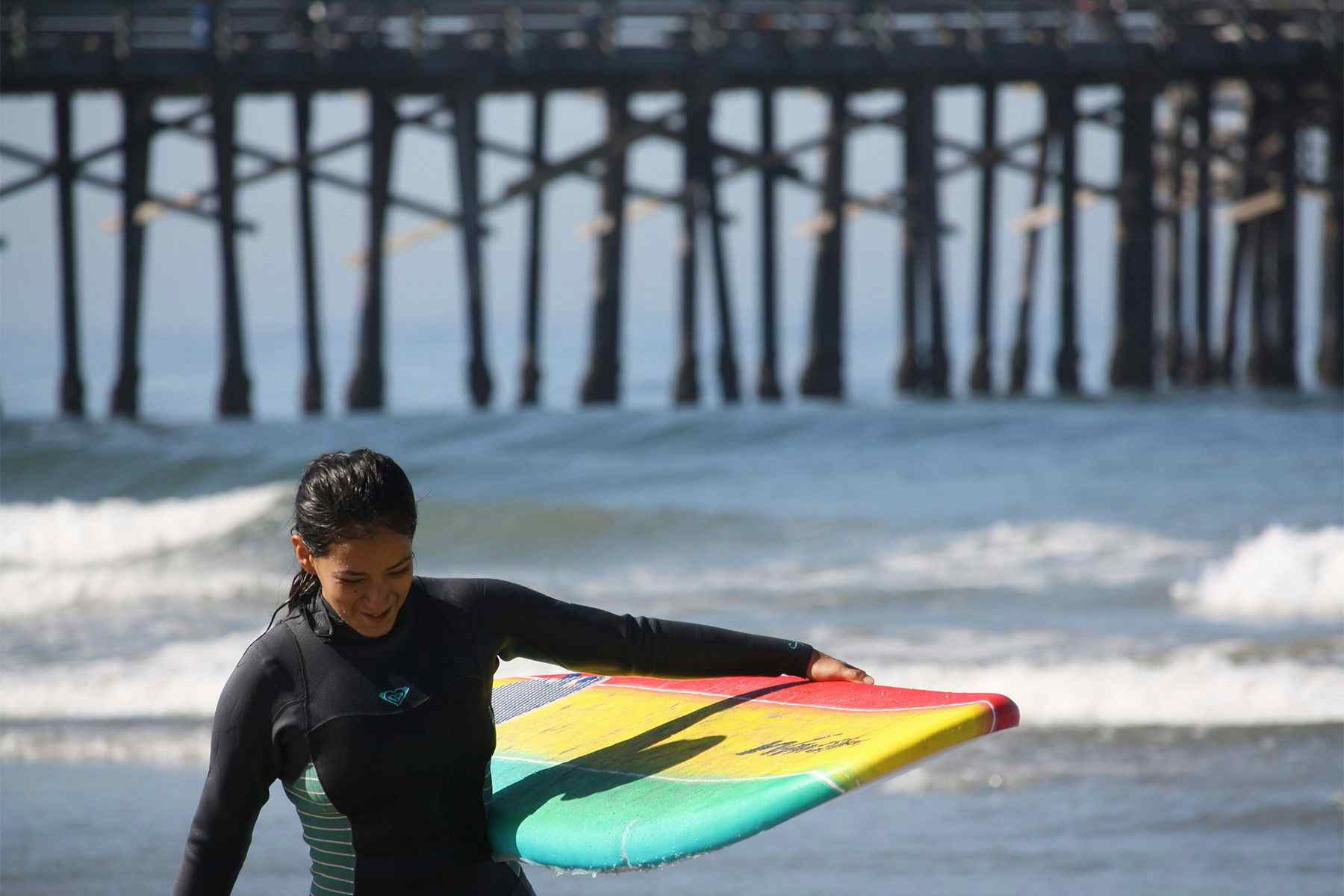
Vanessa Yeager & The Latinx Surf Club
As the sun rises over Newport Beach, Vanessa Yeager is out in the water for a surf. She heads to the local high school at 8.30 am, where she teaches Physical Education until 2:30 pm. She then takes her son to soccer practice, heads to the Visit Huntington Beach HQ to attend a meeting of the ambassador programme she is a part of and, if the conditions are right, squeezes another late afternoon surf session before the day is over. And if being a mother, surfer, Physical Education teacher, and ambassador for Surf City USA weren’t enough, Vanessa also sets aside time to approve posts and respond to emails and messages in the two up-and-coming surf groups she has founded and runs single-handedly – Women Who Surf and Latinx Surf Club – both of which use surfing as a tool to create a safe space for people to interact, have fun, and learn together, all the while building a support system and raising awareness about these two demographics of surfing that, among many others, are vastly under-represented.
“I always knew I wanted to follow my dreams, and all those dreams surrounded surfing, travelling, and family. This is the life I see for myself. Loving what I do, and doing it not for the money or the fame, but the community.”

Vanessa is one of many Californians with Latino heritage. Although she was born in Bellflower and grew up in Moreno Valley, her Mexican roots have never been apart from her North American “way of life”. When asked about the role of ancestry in her life, she thinks back to the weekends spent with her family in East LA, where her mum was brought up. “The culture was rich,” she recalls. “My family is huge, so it was like a party every weekend. We would eat all together and listen to mariachis. Menudo on Sundays and Novellas on the TV all day.”
As a woman and a Latinx surfer, Vanessa has experienced first-hand how the lack of representation affect these groups. And this perception has, in turn, informed the creation of the groups she now runs. “I always wanted and wished to see surfers who looked like me,” she says. “Not pros or Instagram models and clout chasers. Real everyday people who love surfing and getting outdoors. I knew they were out there, but there wasn’t a space for us. So I created the space on Facebook and Instagram – and now they keep showing up.”
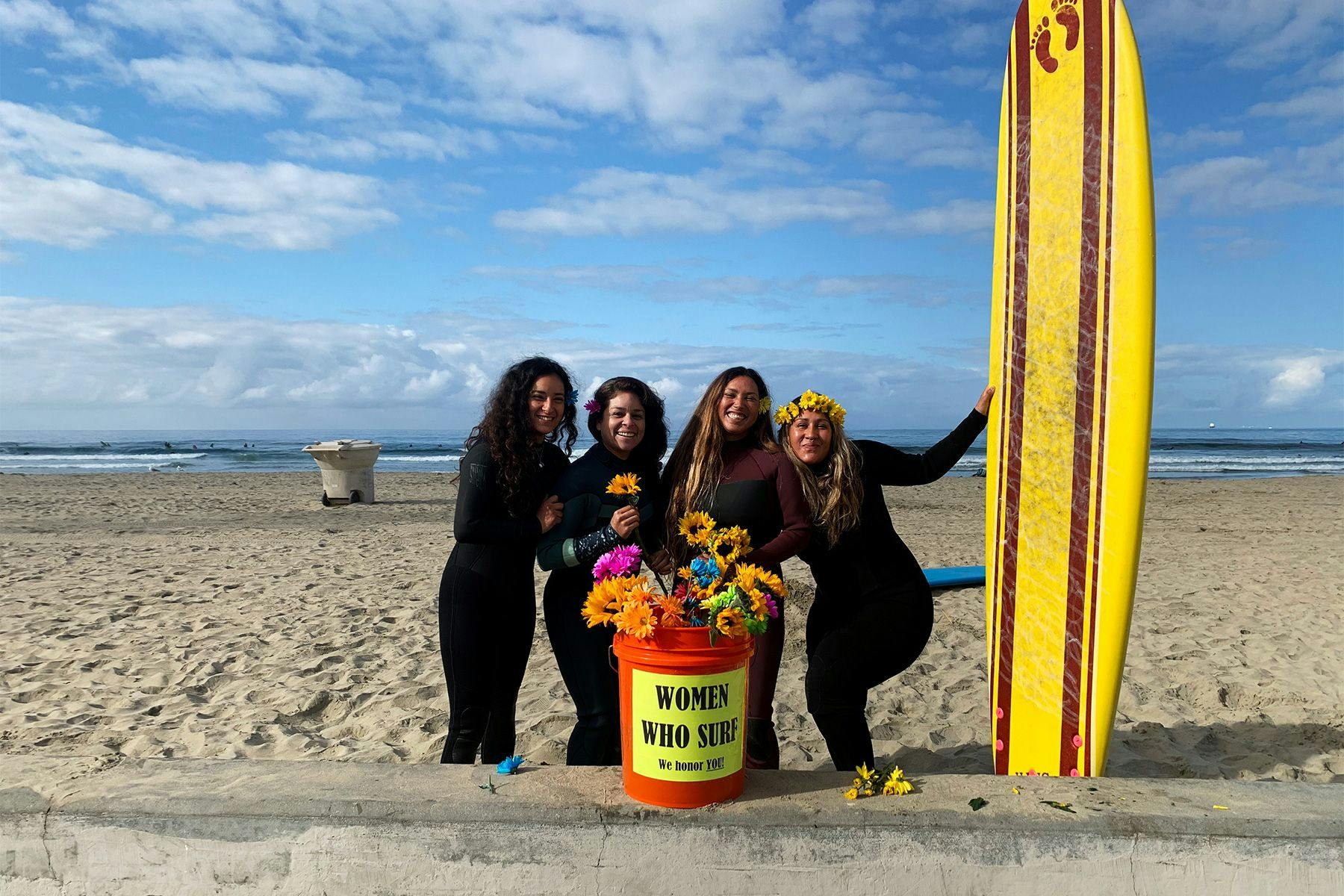
By organising group surf sessions in Newport Beach and meet-ups that not only involve surfing but having fun (such as camping trips, dancing nights out, day trips and weekends away in Baja), Vanessa hopes to, as she puts it, “share the love of surfing con mi gente” [“with my people”]. But besides enjoying themselves and catching waves, she and the members tap into the group to get and develop a sense of community, as well as to ask questions, vent, talk surf lore and discuss surf-related issues. All of which is underpinned by their common heritage – and how little, or how badly, they feel their gente (people) are represented in the world of surfing. “This for me is a way to shine a light on Latinx surfers from all over the globe,” explains Vanessa. “It gives them a chance to be seen, which then allows others to see us and feel inspired to maybe one day try surfing as well. After all, if you can see yourself in others, you can see yourself doing it too.”
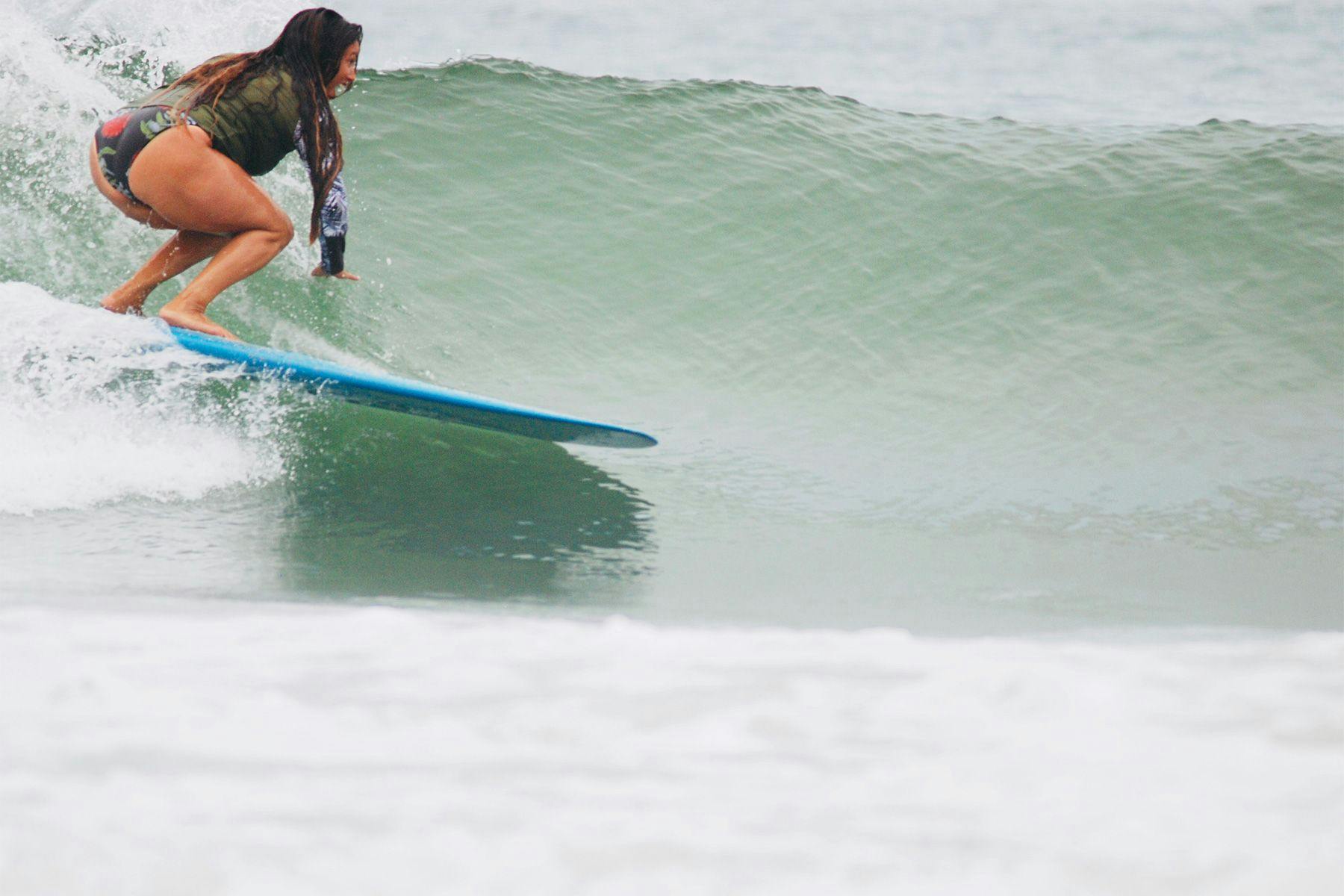
Although issues of representation and diversity have been receiving increasing attention in the surf world, the status quo is far from ideal. The image of a white, athletic, heteronormative male is still the one which, should a picture be drawn, would be the one to represent the word “surfer”…not least because that remains the image we see in most ads. In Vanessa’s opinion, a way to equalise this configuration is to show more diversity in the surfing industry; to promote all sorts of looks, body sizes, genders and age ranges. “The industry knows what they can do better, and it is up to them to make those changes,” she says.“If they don’t, they will only be excluding people – and those people will find their way with or without the industry.”
“For me, surfing has massive amounts of potential in promoting a less prejudiced society. The more diversity that is seen in surfing, the more welcoming surfing will become. No matter what you look like or where you’re from, being able to feel safe and accepted in surfing is beautiful.”
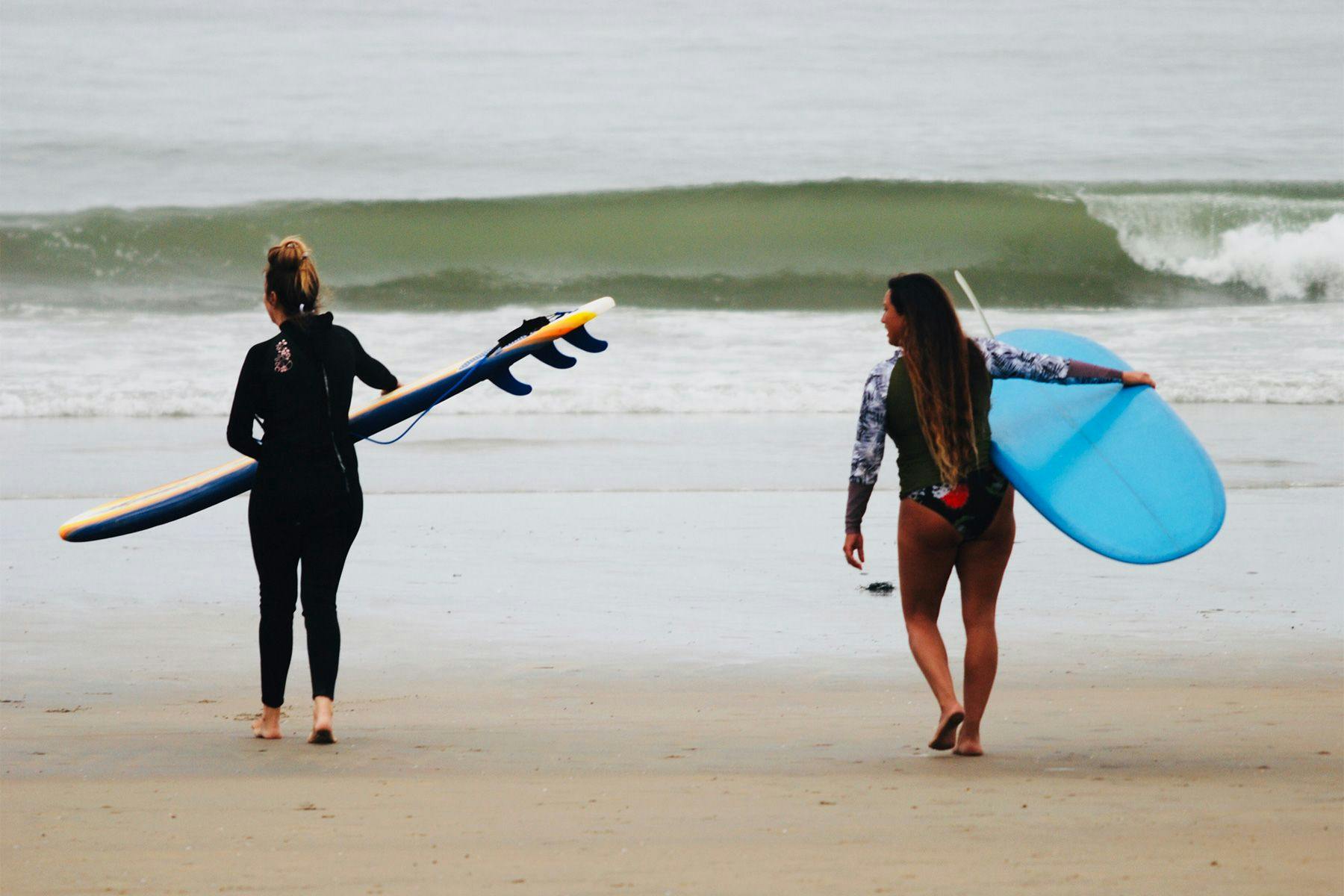
Turning the lens back to California, where roughly 4 in every 10 residents identify themselves as Latino, it seems ironic – if not absurd – that discrimination against ethnic Latino surfers still exists. In this context, initiatives such as Latinx Surf Club use the poison as an antidote, highlighting not what is overshadowed, but what is right under the sun. And it does that by reminding surfers that there is more to a surfer than the image of a surfer. “Some of the best surfers are not rich, they do not live near the beach, and they do not have sponsors,” says Vanessa. “Show me that! I want to see a passionate surfer who is doing what they love. They don’t have to be the best surfer, or the best looking, or the fittest. But passionate!”
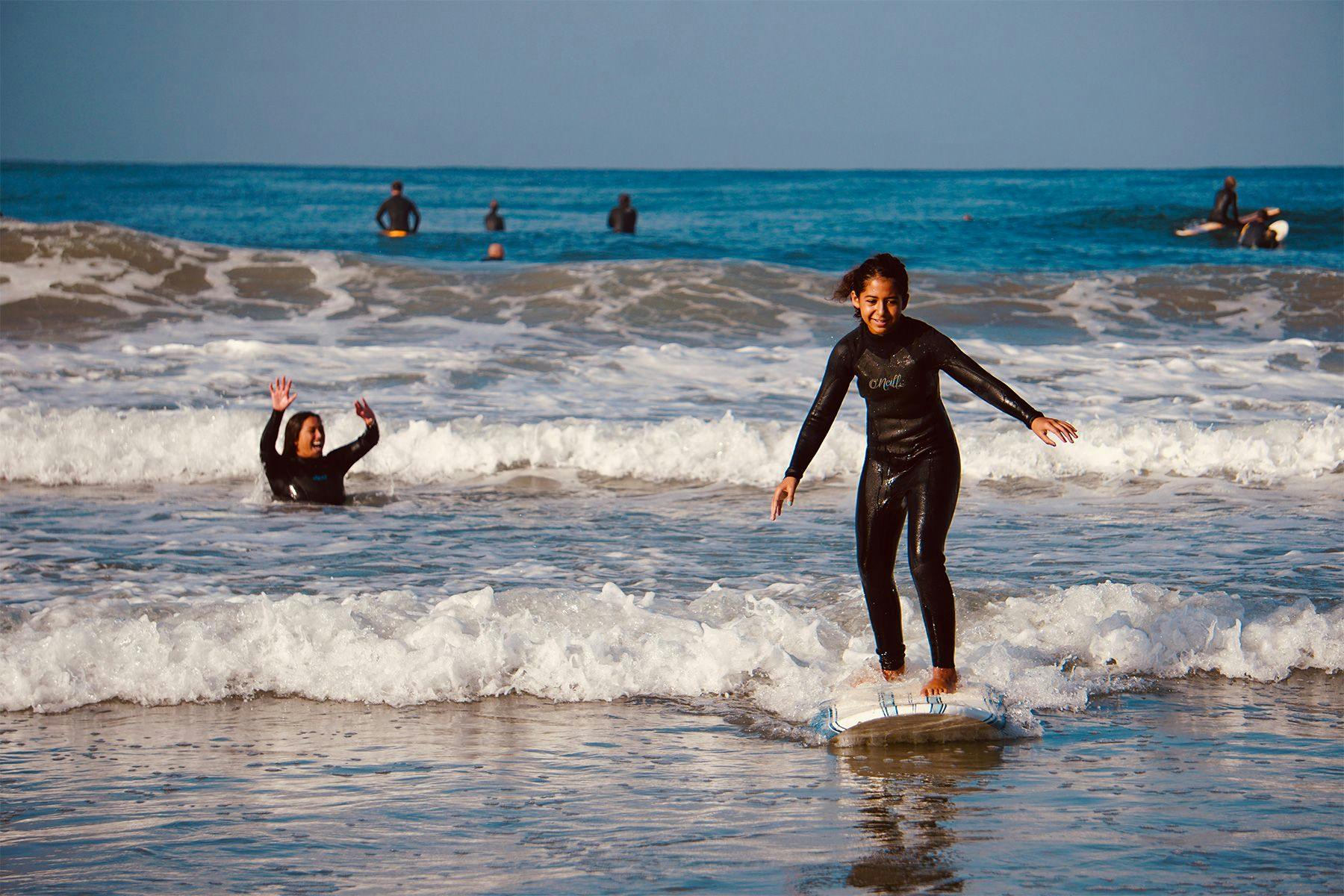
When asked what it takes to run projects like Women Who Surf and Latinx Surf Club, Vanessa puts it down to one Spanish word: ganas. That is, desire, will. Admin-wise, both groups pride themselves on being grassroots, on keeping the framework simple and the focus on the people and the community and the joy surfing brings to them. And so is the plan for the future: to organise more meet-ups and surf trips, watching the communities grow and consolidate whilst having fun together. “It has never been about money for me,” concludes Vanessa. “So yes, it takes time, but it’s worth it. To see everyone come together with love, support, and positive vibes is priceless.”